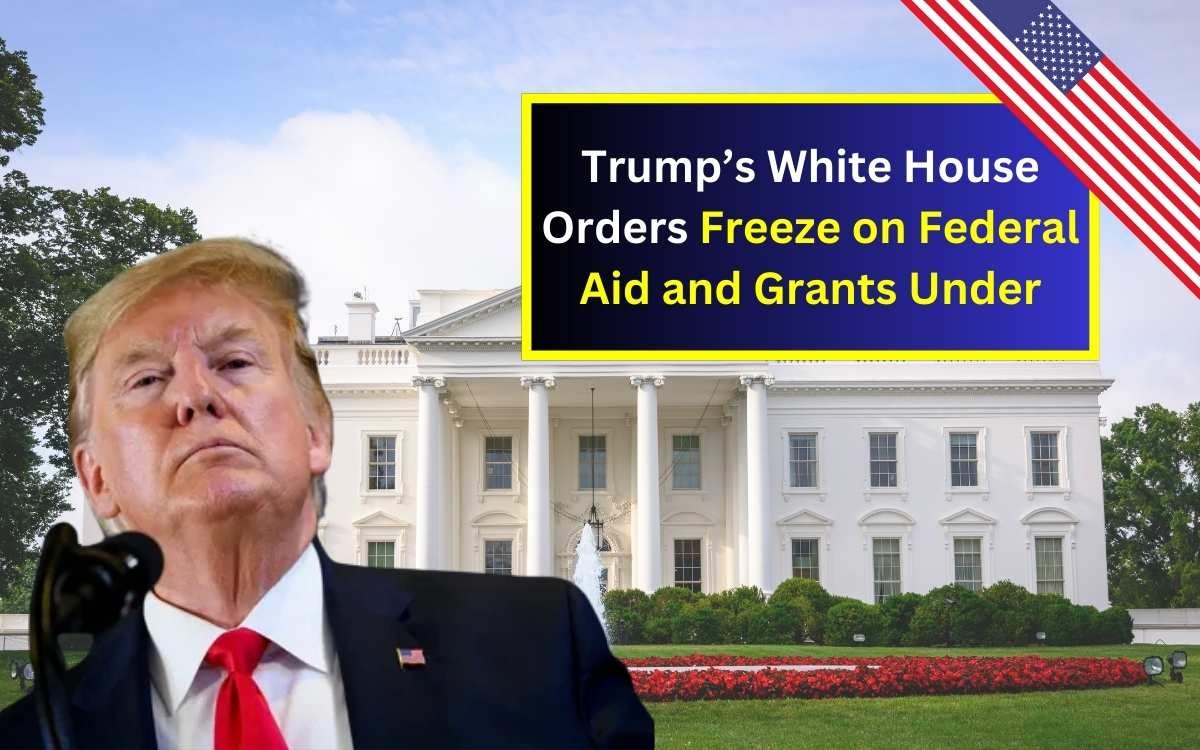The Trump’s White House Orders has implemented a sweeping Freeze on Federal Aid and Grants stirring significant concerns among various organizations and communities. This decision communicated through a memorandum from the Office of Management and Budget (OMB) marks a pivotal shift in federal funding policies. The directive has broad implications with the potential to disrupt billions of dollars in financial assistance programs.
Key Details of the Freeze on Federal Aid and Grants
The memorandum issued by OMB acting director Matthew Vaeth mandates all federal agencies to temporarily halt activities related to the obligation or disbursement of federal financial assistance. The pause officially went into effect at 5 pm on Tuesday.
While this measure affects a wide range of federal aid it explicitly exempts Social Security, Medicare benefits and assistance provided directly to individuals. Agencies are required to submit detailed reports on affected programs by February 10 allowing the administration to assess and realign funding priorities.
Check out our article on $500 Monthly Federal Stimulus Check: Eligibility and Payment Dates for 2025 for more Trump Orders on Federal Aid and Grants
Administration’s Rationale
According to the memo the pause aims to ensure that federal resources align with the administration’s objectives. These priorities include advancing American energy and manufacturing reducing inflation’s financial burden and eliminating expenditures on what the administration deems unnecessary initiatives such as diversity, equity and inclusion programs.
OMB stated, “Financial assistance should focus taxpayer dollars on building a stronger and safer America.” The administration emphasizes efficiency and adherence to presidential priorities in its funding strategy.
Impact on Programs and Communities
The freeze impacts various sectors including
- Domestic Infrastructure and Energy Projects– Funding for ongoing and planned infrastructure improvements faces uncertainty.
- Diversity Related Programs– Initiatives aimed at promoting equity may experience significant setbacks.
- Foreign Aid– A 90 day freeze has been imposed on foreign assistance with potential ripple effects on international partnerships.
Critics argue the freeze could disrupt essential services provided by nonprofits and local governments. The president of the National Council of Nonprofits, Diane Yentel, warned that the halt could “decimate thousands of organizations and leave neighbors without the services they need.”
Legal and Political Reactions
The directive has sparked intense debate. Senate Minority Leader Chuck Schumer criticized the move, stating, “Congress approved these investments, and they are not optional; they are the law.” Legal experts have also raised concerns, highlighting potential violations of impoundment law, which prohibits withholding funds without congressional approval.
The memorandum’s broad language has led to confusion about its full scope. While some programs are explicitly paused, others remain uncertain, causing widespread concern among stakeholders.
FAQs on Trump’s White House Orders
1. What programs are exempt from the freeze?
Social Security, Medicare benefits, and direct assistance to individuals are not affected by this directive.
2. How long will the freeze last?
The duration of the freeze is uncertain, but agencies must submit detailed reports on affected programs by February 10, after which further decisions will be made.
3. What is the rationale behind this directive?
The administration aims to align federal spending with its priorities, focusing on efficiency and eliminating expenditures on initiatives deemed unnecessary or counterproductive.
This freeze on federal aid and grants, Trump’s White House Orders, underscores the administration’s intent to reshape funding priorities and policies. However, its broad implications have sparked significant debate and concern across the nation.
